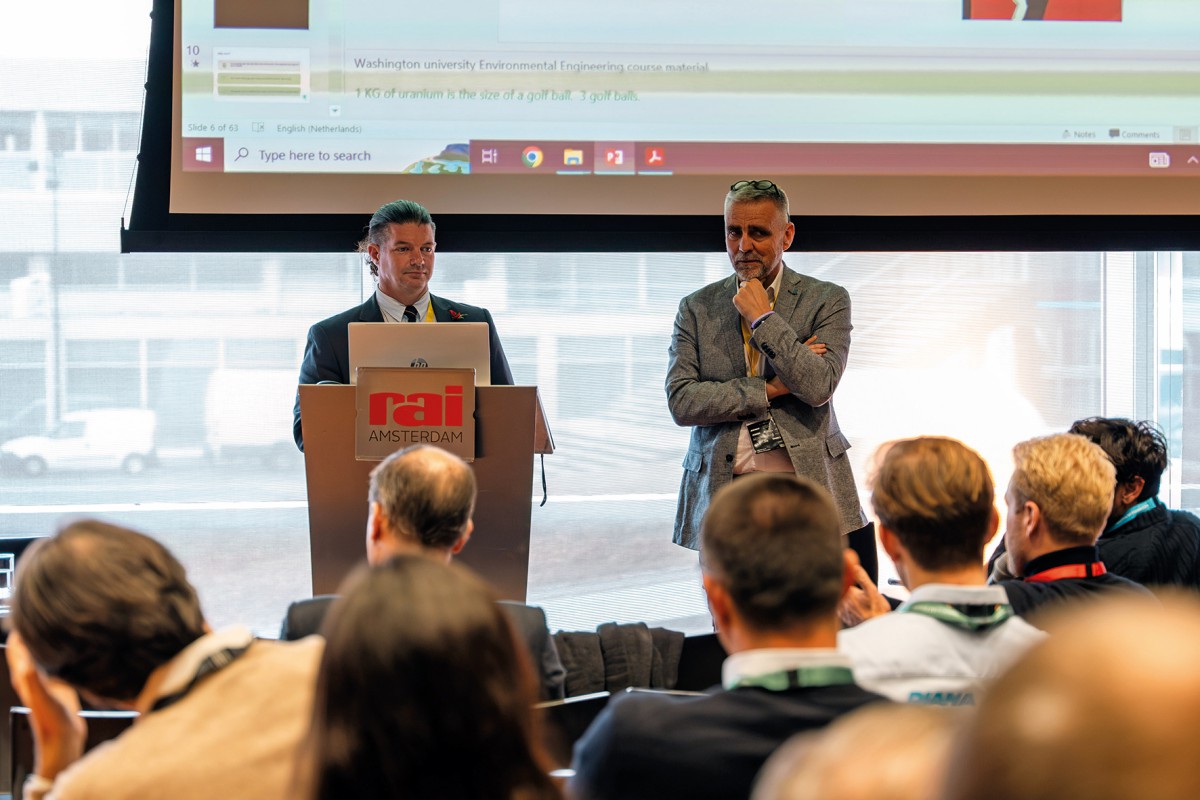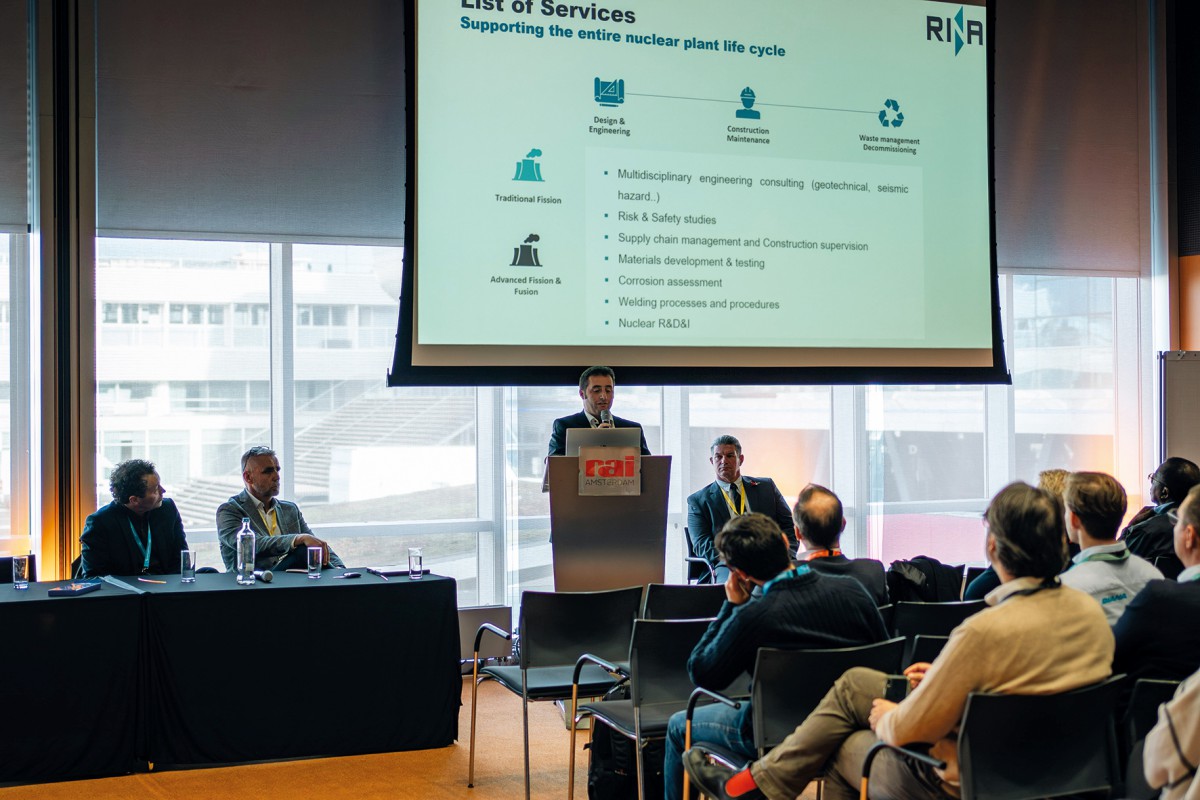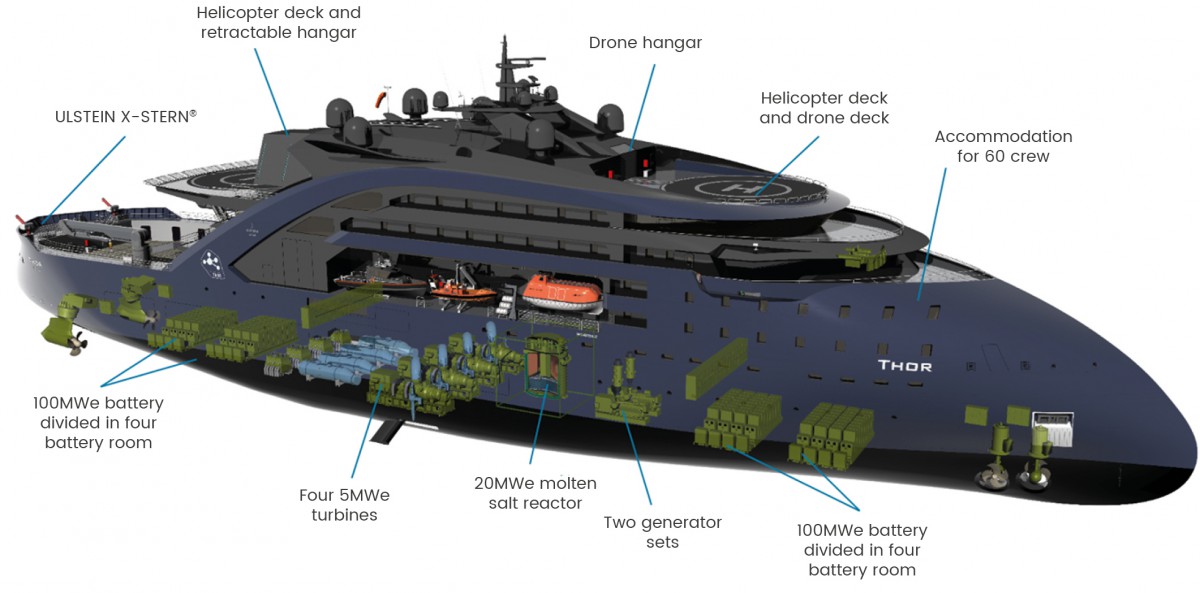Are we on the brink of the nuclear option?
This year's Superyacht Forum saw a lively and fruitful discussion on the use of nuclear power in yachting…
The post-World War II era witnessed the development of the first submarines designed to harness energy from a nuclear reactor for propulsion. The President of the United States, Dwight D. Eisenhower, also considered nuclear power in maritime applications. Thanks to him Savannah, the first nuclear merchant ship, was launched on 23 March, 1962.
Around the same time, other vessels such as the German Otto Hahn, the Japanese Mutsu and the Russian Sevmorput were also launched. Of these, Sevmorput is still operational. Some may wonder why submarines or aircraft carriers already operate with nuclear technology, while yachting and commercial shipping are still waiting. The answer is simple: these are military vessels, not subject to regulations such as SOLAS. Additionally, the nuclear technology used in military ships has been different and classified.
“There are some larger shipping companies with very large vessels who are now looking at the feasibility, [and] in fact are very close to ordering nuclear-powered.”
Certainly, the costs associated with building these ships were one reason why nuclear propulsion didn’t further develop in the civilian sector. Moreover, the economic advantage of using fossil fuels made nuclear propulsion economically less competitive. However, today, with the increasing need to decarbonise the industry, mechanisms such as carbon taxes and new business models introduced by nuclear start-ups are bringing nuclear energy back into play for naval propulsion. What we want to address is why, despite the notable achievements previously mentioned, nuclear technology has not yet been adopted in yachting.
The workshop during The Superyacht Forum, featured experts such as Chris Boreham, chief marine surveyor, Bermuda Shipping & Maritime Authority; Engel-Jan de Boer, yacht segment director, Lloyd’s Register; Øyvind Gjerde Kamsvåg, chief designer, Ulstein; and Patrizio Di Francesco, EMEA special projects manager, RINA, and it provided some interesting conclusions.
It emerged that although the use of nuclear reactors in yachts remains a distant and challenging goal for most builders, applying this technology would undeniably contribute to eco-sustainability, a focal point for the future projects of nearly all shipyards worldwide. It’s clear that the yachting industry is aiming to significantly reduce the total CO2 emissions released into the atmosphere each year.
 Chris Boreham, chief marine surveyor, Bermuda Shipping & Maritime Authority (left); and Engel-Jan de Boer, yacht segment director, Lloyd’s Register (right).
Chris Boreham, chief marine surveyor, Bermuda Shipping & Maritime Authority (left); and Engel-Jan de Boer, yacht segment director, Lloyd’s Register (right).
To understand how close we are to having nuclear technology on board a superyacht, we need to assess the current state of the art and examine the previously mentioned issues that will make nuclear energy play an increasingly crucial role in the future.
It’s evident to all that the cost of alternative fuels is steadily increasing, subject to gradual price volatility and limited availability. In contrast, the new technologies underlying reactors offer very high levels of safety. Additionally, according to projections from leading economists, operational costs will be at least equivalent to those of hydrocarbons at today’s prices.
“All alternative fuels that are being discussed have a lower energy density than fuel oil,” said Boreham. “If we want to improve on the performance and energy efficiency of our industrial systems, as far as I’m concerned, this is the only realistic way to progress technology right now.”
Exploring the advantages of nuclear power as a marine fuel reveals that nuclear reactors occupy significantly less space than alternative fuel engines, require no regular maintenance and don’t need operational personnel. Furthermore, nuclear power eliminates the need for regular stops for refuelling, resulting in significant time and cost savings.
Advocates of this technology also focus on emissions because it has been proven that nuclear operation produces no emissions. Additionally, managing spent fuel seems straightforward because much of the waste can be used to produce energy with next-generation nuclear technologies.
During the workshop, the risks and disadvantages of this technology were not overlooked. Common perception and understanding among users are crucial factors to consider given the potential environmental impact of nuclear energy which has often sparked opposition from communities and environmental organisations.
 (Left to right) Øyvind Gjerde Kamsvåg, chief designer, Ulstein; Engel-Jan de Boer, yacht segment director, Lloyd’s Register; Patrizio Di Francesco, EMEA special projects manager, principal engineer, RINA; Chris Boreham, chief marine surveyor, Bermuda Shipping & Maritime Authority.
(Left to right) Øyvind Gjerde Kamsvåg, chief designer, Ulstein; Engel-Jan de Boer, yacht segment director, Lloyd’s Register; Patrizio Di Francesco, EMEA special projects manager, principal engineer, RINA; Chris Boreham, chief marine surveyor, Bermuda Shipping & Maritime Authority.
The disposal of radioactive waste requires safe and sustainable solutions to avoid environmental contamination. Nuclear energy systems must be managed through rigorous measures to ensure that any accidents have minimal consequences.
After years of in-depth studies, the best solution today is fourth-generation reactors and small modular reactors (SMR), representing the latest innovations in fission reactor tech-nology, currently in the prototype and construction phases. These reactors offer higher efficiency and safety than their predecessors, producing fewer waste products and reducing management costs. Fourth-generation reactors operate on completely different principles because they are reactors with very low radioactivity, making them easier to manage.
Fourth-generation reactors can be divided into two main categories: thermal reactors and fast neutron reactors. Their capacity to provide up to 1,500MWe makes them a powerful energy solution. A more compact variant is represented by small modular reactors, capable of delivering about 300MWe.
Among fourth-generation thermal reactors, the Very High Temperature Reactor (VHTR) reaches temperatures close to 1,000ºC, using graphite as a moderator and helium or molten salts as coolants. Other examples include molten salt reactors (MSR), using fluoride molten salts as coolants, and supercritical-water-cooled reactors (SCWR), using supercritical water as a coolant.
Fast neutron reactors lack a moderator. Among these, the gas-cooled fast reactor (GFR) uses helium as a coolant, while the sodium-cooled fast reactor (SFR) and the lead-cooled fast reactor (LFR) use sodium and lead respectively as cooling fluids. Small modular reactors are designed for modular and dispersed applications, featuring smaller dimensions. These cylindrical reactors, with a height ranging from 20 to 25 metres, can generate about 300MW of electrical power, offering flexible and scalable solutions.
“Significant efforts in terms of investment will be needed to reach the first prototypes and to marine them. It’s a real epochal change, like when we transitioned from sail to motor propulsion.”
“As you can imagine, there are some of the larger shipping companies with very large vessels, for example, container ships and tankers and bill carriers who are now looking at the feasibility, [and] in fact are very close to ordering nuclear-powered,” said de Boer.
One of the most advanced examples of what could be a nuclear propulsion installation on board is Ulstein’s Ship Design Concept, a prototype demonstrating how nuclear power can meet the challenge of zero emissions.
Ulstein has launched ULSTEIN THOR, a 149-metre 3R (replenishment, research and rescue) design featuring a thorium molten salt reactor (MSR) to generate vast amounts of clean, safe electricity. This enables the vessel to operate as a mobile power/charging station for a new breed of battery-driven cruise ships.
“There are many companies doing research on it. They are in different stages,” said Kamsvåg. “Some are further [along], some are not. But none of them is readily available with a handbook that says integrating this reactor, you have to do this. So, at the moment, we’re not there yet.”
Di Francesco, who is also confident about the long time span before nuclear installation could be on board, explained, “The fourth-generation reactor project is still in its embryonic stage. The potential of nuclear energy is vast, but it’s also true that much more time is needed for effective operability.”

ULSTEIN THOR, a 149-metre 3R design, which features a thorium molten salt reactor (MSR) to generate electricity.
One estimate puts it at 20 years, not because its development presents particular problems but because it’s essential to use it for a long time to identify any issues and specificities required for correct, effective and safe use – and not just on land because all data will then need to be transferred to a floating object.
Di Francesco confirmed that the first obstacle is common perception, the need to dispel prejudices about nuclear power, which inevitably creates a perception of real risk. “Our work will illustrate reality, guiding users and industry professionals in the yachting sector through a clear and concrete reasoning.” The view of the majority is undoubtedly influenced by the old-generation reactors, and this is where the preconception lies.
The current research phase is theoretical, where these are developed. After about three years, it will be possible to proceed to initial tests, and these technologies must be developed within nationally established work plans. The test engineering provider, responsible for designing the technology, is also in charge of conducting the very first tests to validate products following precise standards. Subsequently, testing in laboratories will be required, where highly qualified personnel will need to be employed.
“At this moment, when we are still in the concept stage of the project, we have established partnerships like the one with Fincantieri that aim to complete a path that will lead us, in the long term, to build something concrete,” said Di Francesco.
“The deployment of newcleo’s innovative LFR [lead-cooled fast reactor] for naval propulsion would involve placing a closed mini-reactor on vessels as a small nuclear battery producing a 30 MW electric output. This would require infrequent refuelling [only once every 10-15 years], very limited main-tenance and easy replacement at the end of life.”
He added, “Significant efforts in terms of investment will be needed to reach the first prototypes and to marine them. It’s a real epochal change, like when we transitioned from sail to motor propulsion.”
Therefore, we find ourselves on the brink of a revolution that is preparing to positively disrupt the entire global nautical landscape but will still keep us on edge for a couple of decades still to come.
NEW: Sign up for SuperyachtNewsweek!
Get the latest weekly news, in-depth reports, intelligence, and strategic insights, delivered directly from The Superyacht Group's editors and market analysts.
Stay at the forefront of the superyacht industry with SuperyachtNewsweek
Click here to become part of The Superyacht Group community, and join us in our mission to make this industry accessible to all, and prosperous for the long-term. We are offering access to the superyacht industry’s most comprehensive and longstanding archive of business-critical information, as well as a comprehensive, real-time superyacht fleet database, for just £10 per month, because we are One Industry with One Mission. Sign up here.
Related news
.jpg)
Gulf Craft’s decarbonisation strategy
We speak with Gulf Craft executives on the shipyard’s decision to invest in hydrogen-based alternative fuels over methanol
Crew
.jpg)
RINA releases service profile for larger yachts
Italy’s first certification and engineering company to deliver services to 40-180m vessels
Business

The Nuclear Equation
Developments across the marine industry suggest the idea of a nuclear-powered superyacht may not be as science fiction as it once sounded
Technology
Related news
Gulf Craft’s decarbonisation strategy
2 years ago
RINA releases service profile for larger yachts
3 years ago
The Nuclear Equation
3 years ago
NEW: Sign up for
SuperyachtNewsweek!
Get the latest weekly news, in-depth reports, intelligence, and strategic insights, delivered directly from The Superyacht Group's editors and market analysts.
Stay at the forefront of the superyacht industry with SuperyachtNewsweek



